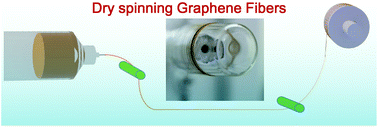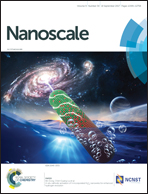Dry spinning approach to continuous graphene fibers with high toughness†
Abstract
Graphene fiber (GF) has emerged as a new carbonaceous fiber species since graphene-based liquid crystals were discovered. The growing performances of GFs in terms of their mechanical performance and their functionalities have assured their extensive applications in structural materials and functional textiles. To date, many spinning strategies utilizing coagulation baths have been applied in GF, which necessitates a complicated washing process. Dry spinning is a more convenient and green method for use with fibers in the chemical fiber industry, and should be a good option for GFs; however, this technique has never been used in a system of GF. In this research, first the dry spinning technique was used to fabricate continuous GFs and the dry spun GFs showed good toughness and flexibility. The dry spinnability of graphene oxide liquid crystals was achieved by choosing dispersive solvents with low surface tension and high volatility. The dry spun neat GFs possessed high toughness up to 19.12 MJ m−3, outperforming the wet spun neat GFs. This dry spinning methodology facilitates the green fabrication of fibers of graphene and graphene-beyond two-dimensional nanomaterials, and it may also be extended to other printing technologies for complex graphene architectures.



 Please wait while we load your content...
Please wait while we load your content...